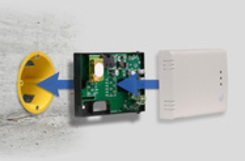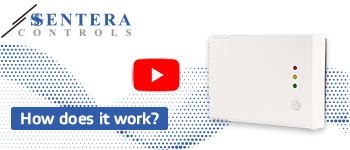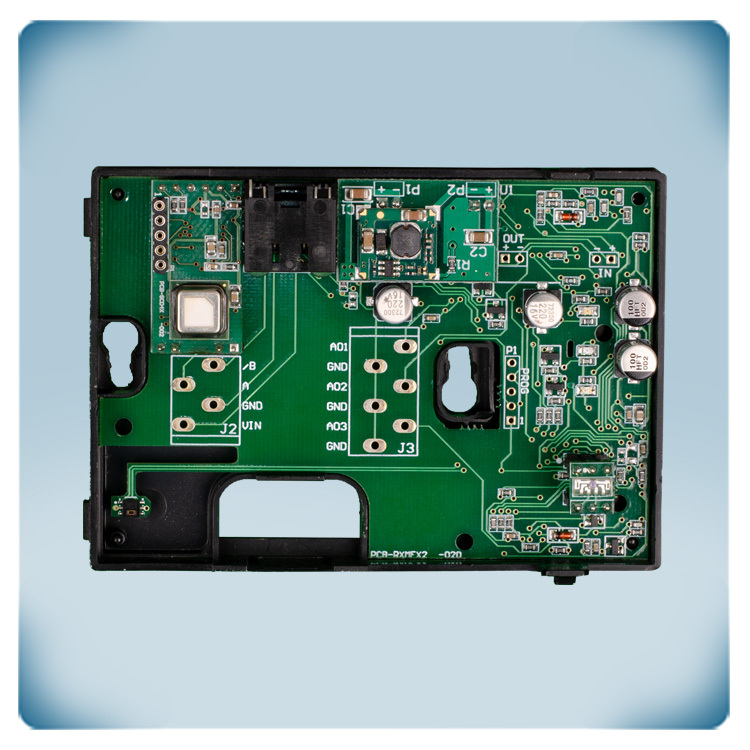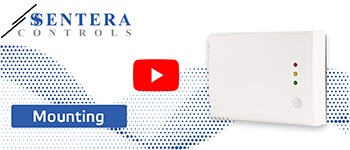EU declaration conformity
CO2 sensor | wall mounting | LED indicators | PoM
Product description
This room sensor measures temperature, relative humidity, CO2, and ambient light. It provides a visual indication of CO2 levels with green, yellow, and red LED indicators.
For connectivity, the sensor uses Modbus RTU for data transmission and is powered by 24 VDC PoM (Power over Modbus). This setup allows for a single RJ45 connector to handle both power and communication.
The integrated ambient light sensor can be used to control ventilation based on room occupancy.
All settings, including the intensity of the LED lights, are adjustable via Modbus RTU. The CO2 sensor element is replaceable, making maintenance simple. This sensor is commonly used in schools, offices, and restaurants to monitor CO2 and ensure an adequate supply of fresh air.
Documents
Additional specifications and description
Why Are CO2 Sensors Crucial for Ventilation Control, and What Values Do They Measure?
People produce CO2 or carbon dioxide while breathing. That makes CO2 concentration a good indicator for the occupancy and activity level in a space. The higher the occupancy or activity level, the more fresh air supply is required to maintain good indoor air quality. That is why in many applications, CO2 sensors are used as an indicator for the ventilation requirements. Next to CO2, this sensor also measures temperature, relative humidity and ambient light level. The measured temperature, relative humidity, CO2 level, dew point temperature and ambient light level are available via Modbus RTU communication. If the Sensor Lacks Analog Outputs, How Is Data Read, and What Are the Advantages of Modbus?
This sensor does not have analogue outputs which makes it simpler and more cost efficient. All measured values are available via the Modbus input registers of this sensor. Reading the measured values is possible via SenteraWeb - our online HVAC platform, via 3SModbus software, via a BMS system or via another Modbus master device. Modbus has numerous advantages. The most important ones are that digital signals are less susceptible to interference than analogue signals and that longer cables can be used. Cable lengths of up to 1.000 meters are possible.
How Is the CO2 Level Visually Indicated, and Can LED Ranges Be Customized?
This HVAC transmitter offers a clear, visual indication of the CO2 level via the green, yellow and red LEDs. The green LED indicates that the CO2 level is within range - there is sufficient fresh air supply. When the CO2 level enters the alert range, the yellow LED lights up. Red means that CO2 levels are too high or that there is insufficient fresh air supply. The ranges can be adjusted via the Modbus holding registers. The LED indicators can show the status of one of the three measured values, which is set to CO2 by default.
How Are the Sensor's Power and Communication Connected, and What Are the Wiring Recommendations?
One RJ45 connector is all it takes to connect this sensor. Modbus RTU communication and 24 V DC power supply are connected via one UTP cable - we call it Power over Modbus or PoM. All measured values are available via Modbus RTU communication. To facilitate wiring, we recommend to use the Sentera 24 V DC power supplies with RJ45 connector. These power supplies offer protection against short circuit, overload and overvoltage. A 24 V DC supply voltage increases the safety and reliability of your installation.
How Do Photoacoustic Sensor Technology and the ABC Logic Algorithm Work?
Photo-acoustic sensors are highly sensitive and specific, making them useful for the detection of various gases such as pollutants, trace gases and volatile organic compounds. The use of specific infrared wavelengths corresponding to the absorption lines of CO2 ensures that interference from other gases is minimised.
In contrast to transmissive NDIR sensors, photoacoustic NDIR sensors measure the energy absorbed by CO2 molecules. When the infra-red emitter is pulsed, CO2 molecules absorb infrared light on a regular basis. This causes additional molecular vibration, which results in a pressure wave within the measurement chamber. The higher the concentration of CO2, the more light is absorbed, and thus the amplitude of the acoustic wave increases. A microphone inside the gas chamber detects this, and the CO2 concentration can then be calculated. Photoacoustic NDIR sensing allows for much more miniaturisation of the measurement chamber. Furthermore, because sound waves are omnidirectional, the relative position of the emitter and microphone is unconstrained. Thus, photoacoustic NDIR sensors are typically more mechanically and thermally robust.
The self-calibrating algorithm ABC logic is enabled by default. This algorithm is designed to be used in applications where CO2 concentrations drop to outside ambient conditions (400 ppm) at least once (15 minutes) in a 7-day period, which is typically seen during unmanned periods. The sensor reaches its operational accuracy after 25 hours of continuous operation at a condition where it is exposed to ambient reference levels of air with 400 ppm ± 10 ppm CO2.
How Is the Sensor Mounted Indoors, and What Should Be Considered for Optimal Performance?
 This sensor can be mounted on a wall or a surface indoors. The mounting holes are designed to accommodate standard European wall mounting boxes. Two screws are required to secure the sensor to the wall mounting box. The sensor enclosure will completely enclose the wall mounting box. To ensure peak performance, keep the sensor out of direct sunlight.
This sensor can be mounted on a wall or a surface indoors. The mounting holes are designed to accommodate standard European wall mounting boxes. Two screws are required to secure the sensor to the wall mounting box. The sensor enclosure will completely enclose the wall mounting box. To ensure peak performance, keep the sensor out of direct sunlight.
What Are the Design and Protection Features of the Sensor Enclosure?
The enclosure is intended for indoor use only. It has an IP30 rating for dust and moisture protection. Sentera Plastics designed and manufactured the enclosure in-house. It is extremely durable due to the use of high-quality r-ABS plastic. This sensor can be used in most interior styles due to its contemporary modern design.
∞ Monitoring air quality

 This sensor can be mounted on a wall or a surface indoors. The mounting holes are designed to accommodate standard European wall mounting boxes. Two screws are required to secure the sensor to the wall mounting box. The sensor enclosure will completely enclose the wall mounting box. To ensure peak performance, keep the sensor out of direct sunlight.
This sensor can be mounted on a wall or a surface indoors. The mounting holes are designed to accommodate standard European wall mounting boxes. Two screws are required to secure the sensor to the wall mounting box. The sensor enclosure will completely enclose the wall mounting box. To ensure peak performance, keep the sensor out of direct sunlight. What Are the Design and Protection Features of the Sensor Enclosure?
The enclosure is intended for indoor use only. It has an IP30 rating for dust and moisture protection. Sentera Plastics designed and manufactured the enclosure in-house. It is extremely durable due to the use of high-quality r-ABS plastic. This sensor can be used in most interior styles due to its contemporary modern design.
∞ Monitoring air quality







.webp)
.webp)
.webp)
.webp)
.webp)





Remarks, reviews & ratings